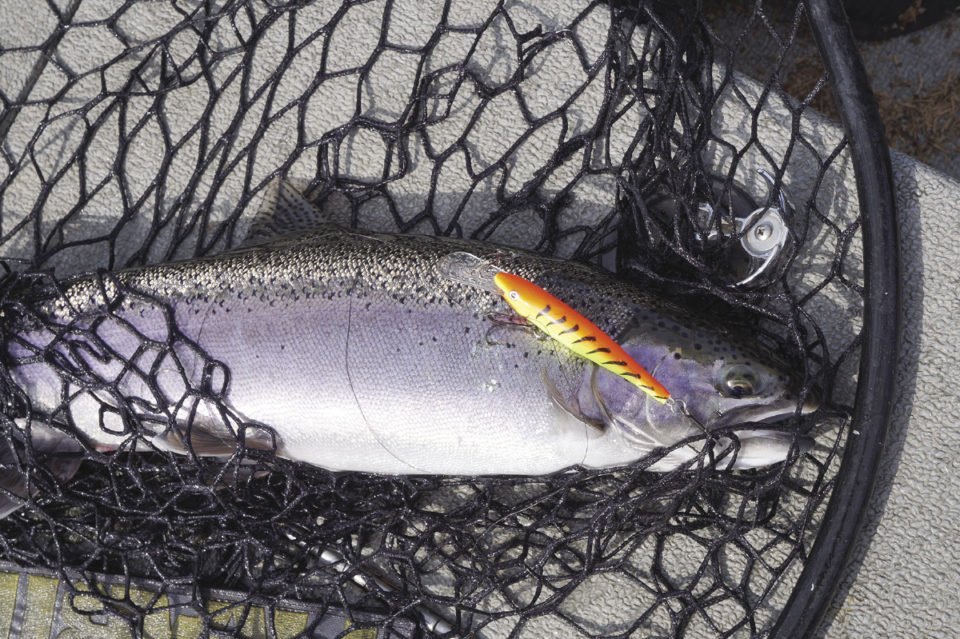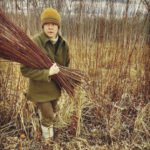When the days shorten and the leaves start to change, many anglers put their rods and reels away for the season. However, autumn is a wonderful time of year to fish, and it features some of the most interesting opportunities of the year. One of the most amazing—and overlooked—is fall steelhead fishing.
Steelhead is just another name for rainbow trout that live in Lake Superior, but spawn in coastal rivers in the spring. Most steelhead anglers focus on late April, and early May, as the majority of the steelhead population is in the rivers and streams. However, fall brings a “false run” of steelhead that are not in the rivers to spawn, but to feed on salmon eggs and small fish. These steelhead are bright silver, and are twice the fighters the spring steelhead are. I’ve had fall rainbows repeatedly jump after being hooked, sometimes doing mid-air cartwheels trying to shake the hook. They are dynamite on a stick.
Here are some tips to catch the fall steelhead of Ontario’s North Shore.
Medium Rivers and Large Creeks
Fall steelhead will come up even the smallest creeks, but they require a decent flow of water. In the autumn, smaller creeks often are nearly dry, so anglers are best to focus on rivers with more water. Because fall steelhead are feeding primarily on dropped eggs from salmon, it’s hard to go wrong using salmon roe bags, or imitations such as colored beads. The most efficient way to fish these baits is via a float. The float is fixed to the line, and then split shot is used to weigh down the hook and bait. Generally, a #6 or #8 octopus hook is best, as they are sharp and the fine wire hooks the hard mouth of a steelhead well. Drift the float with the current, and let the line free spool as it drifts. When the float dips under, set the hook.
Another option is to cast hardware such as spoons or spinners. Some of my favorites include the Little Cleo, Krocodile and Mepps Aglia #3. One of my fondest fall steelhead memories took place nearly three decades ago on a river east of Thunder Bay in early October. It was a glorious fall morning, and the sun was out, taking the chill from the air. The river was running strong after a night of rain and it just looked really fishy. I tossed a Mepps into the pool and slowly began winding it back. The flash of the silver blade was clearly visible in the clear water. Just as it was approaching the shore, a bright streak roared from the pool, grabbed the spinner and bolted off. Before I knew what was happening the fish was midair and twisting like a banshee. The image of the steelhead, the color of a new nickel, glistening in the sunlight, has stayed with me for years. I did land that fish, which was about 6 pounds and fat from gobbling up chinook eggs.
If you like to fly fish, fall steelhead are the perfect quarry. Not only will they take a fly, but they will have you in the backing in no time. Drifting and swinging wet flies are the preferred technique, generally on a sink tip line. Some of the best flies are on the large side, and flashy. The Egg Sucking Leech pattern is a good one, as it includes the red/orange of an egg, with a long black body. Flashier flies like the Deceiver with red, green and yellow also catch fall steelhead. More traditional egg pattern flies also work well, as do old school yarn flies. Fall steelhead are aggressive and will chase a stripped in fly. Strikes are usually hard.
Large Rivers
Steelhead fishing in the larger rivers, such as the Nipigon, Michipicoten and Steel—to name a few—is a slightly different thing than in the smaller tributaries. For starters, in rivers where you can launch a boat, trolling becomes an option. In the Nipigon, for instance, many fall steelhead are caught trolling diving crankbaits like the Rapala #9 Shad Rap, Rapala Deep Diving Husky Jerk or Berkley Flicker Shad. Trolling a diving plug keeps the lure in the strike zone longer, and allows the angler to cover a lot of water. Strikes on trolled lures are also very aggressive. As often as not, the fish is in the air before the strike registers on the rod. Any narrows or pool tail out is a prime spot.
Another option in large rivers when using a boat or canoe is to drift spawn. A roe bag or treated chunk of salmon egg skein is weighted with split shot on a small dropper rig. The sinkers bounce lightly along the bottom as the angler drifts in the current with the boat. Strikes on roe are usually a bit more subtle, so watch the line for changes.
Shore bound anglers on larger rivers can chuck hardware and cover a lot of water. Heavier bodied spoons such as the Little Cleo, Krocodile, Williams Ridgeback and Acme Tor-P-Do will allow you to cheat the wind and get a long cast. Retrieve the spoon fast enough that it’s off bottom, but slow enough that the lure is down in the water column. Finding this middle ground will mean a snag or two. That’s the cost of doing business. Using a slip float and roe is an effective way to cover water from shore. Use enough weight to cock the float quickly and adjust the leader length to have the bait just off bottom. Finding this sweet spot usually requires a bit of experimentation, but the results can be worth the effort.
Fall steelhead are a thrilling fish to catch and are pursued at the most wondrous time of the year. Give them a go this fall and experience the magic.






